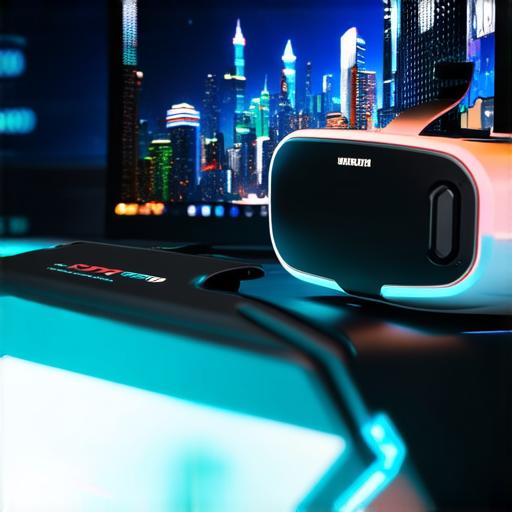
Why virtual reality is the future
Virtual reality is a rapidly advancing technology that has the potential to revolutionize the way we interact with the world around us.
In recent years, virtual reality (VR) has become more accessible and affordable, which has led to its widespread adoption in various industries, including gaming, education, healthcare, and real estate. The immersive experience offered by VR technology can transform how people learn, work, socialize, and even treat mental health conditions.
One of the most significant advantages of virtual reality is that it allows users to experience things they may not otherwise be able to. For example, a user could fly over a city or practice surgery on a virtual patient without leaving their living room.
This technology can also be used for training employees in hazardous industries like construction or aviation, allowing them to practice skills in a safe environment without risking their lives.
Another benefit of VR is its accessibility. With advancements in hardware and software, VR technology has become more affordable and user-friendly, making it accessible to a wider range of people.
The Oculus Quest 2, for instance, costs only $299 and doesn’t require a powerful computer to run. This makes VR accessible to those who may not have had access to it before.
Virtual reality is also transforming communication and collaboration by allowing people to come together in virtual environments for more effective meetings and experiences.
Architects, for example, can use VR to walk clients through a proposed design, allowing them to see how it would look and feel in real life. This technology has the potential to improve teamwork and productivity, especially when teams are working remotely.
Furthermore, virtual reality is being used to treat mental health conditions like anxiety and depression. By creating immersive environments that simulate real-life situations, VR can help people confront their fears and develop coping strategies. For instance, some therapists use VR to treat phobias by exposing patients to the thing they fear in a controlled environment.
This technology is also being used to treat post-traumatic stress disorder (PTSD) by allowing patients to experience and process traumatic events in a safe and controlled way.
Virtual reality is also changing the way we learn. It can be used to create interactive learning experiences that are more engaging and effective than traditional methods.
By allowing students to experience things firsthand, VR can help them better understand complex concepts and retain information more effectively. For example, medical students can use VR simulations to practice surgeries or explore the human body in a way that’s not possible with textbooks and diagrams alone.

This technology is also being used to teach language skills by creating immersive environments where users can practice speaking and listening in real-life scenarios.
Virtual reality has already revolutionized the gaming industry, but it also has the potential to change the way we experience other forms of entertainment like movies and music. By allowing users to be fully immersed in a virtual environment, VR can create more engaging and memorable experiences than traditional media.
For example, some filmmakers are using VR to create 360-degree videos that allow viewers to look around and explore the scene from any angle.
This technology is also being used to create interactive music videos where users can participate in the song and dance along with the artist.
Virtual reality is also changing the way we work. It has already transformed industries like architecture, engineering, and construction by allowing workers to design and test new products before they’re built, which can save time and money in the long run.
This technology is also being used to create virtual simulations of workplaces, which can help employees learn new skills and become more comfortable with their jobs before they start working in a real-life environment.
Finally, virtual reality has the potential to change the way we socialize. It allows people to connect with others in virtual environments, which can be especially beneficial for people who may have difficulty socializing in real life due to social anxiety or other conditions.
For example, some therapy programs use VR to help patients develop social skills and confidence by simulating real-life social situations.
This technology also has the potential to bring people from different parts of the world together in virtual environments, allowing them to experience new cultures and lifestyles.
In conclusion, virtual reality is a rapidly advancing technology that has the potential to revolutionize the way we interact with the world around us. It is transforming industries like gaming, education, healthcare, and real estate, improving communication and collaboration, treating mental health conditions, changing the way we learn, experience entertainment, work, and socialize.
As VR continues to evolve and become more accessible and affordable, it will likely become an integral part of our daily lives in the years come.


